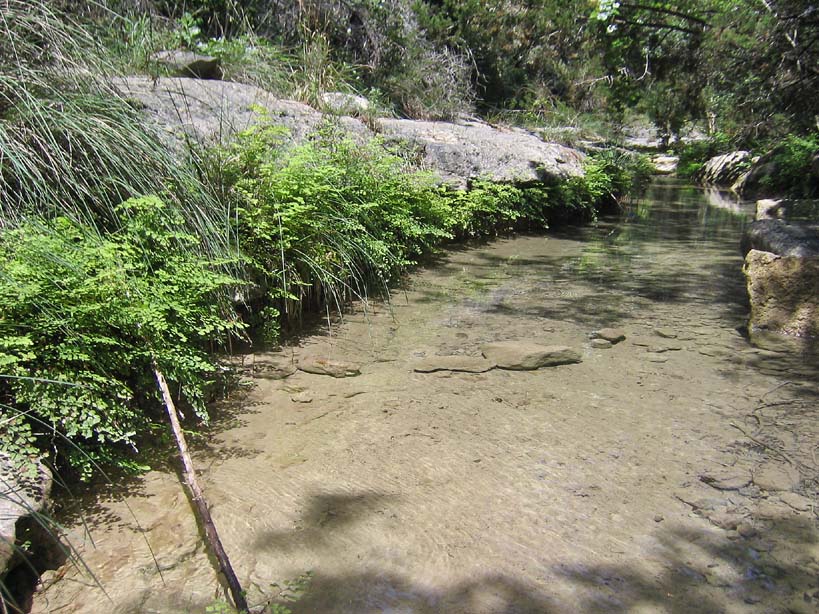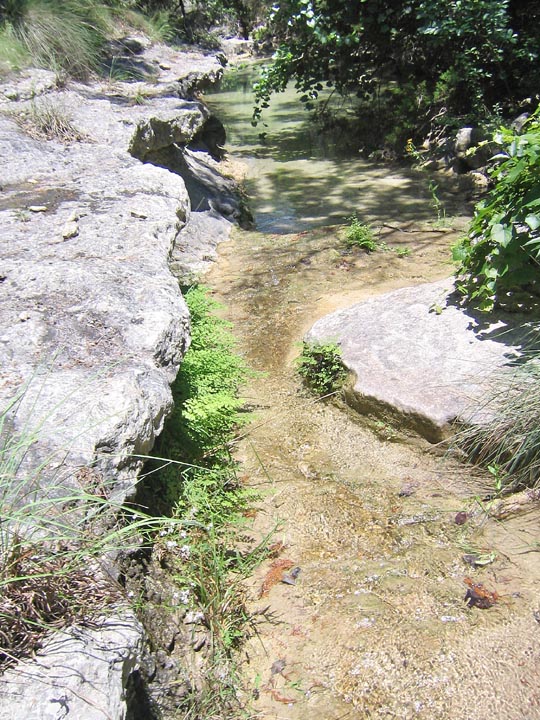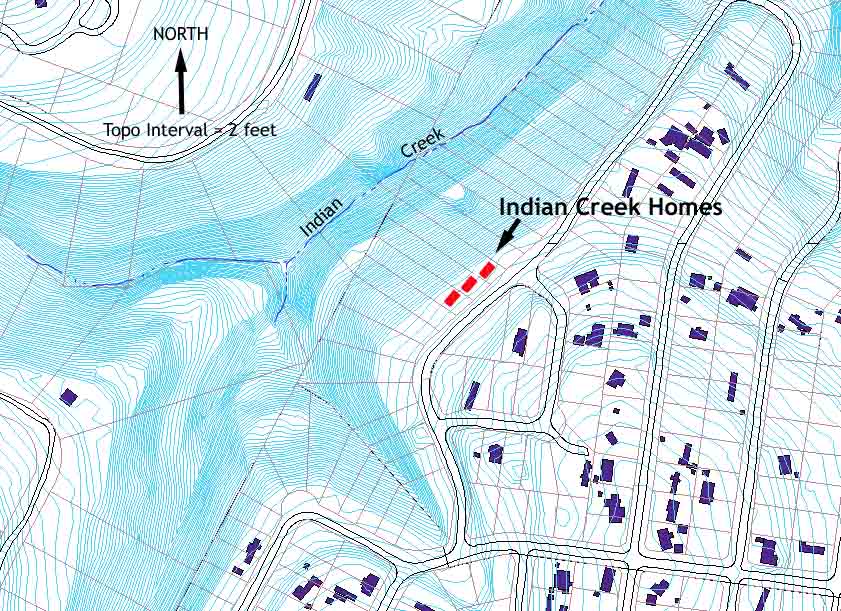
Melton Engineering and
Homebuilders - Indian Creek Homes
"Homes for the 21st Century"
~~~IMPORTANT NOTICE~~~
~~~TOURS OF THE CREEK BY APPOINTMENT ONLY~~~
Because of the extremely fragile environment, and the personal risk inherent in just getting to the creek at the bottom of the 120 foot deep Indian Creek Canyon, the owner requires creek tours to be guided. Call Debbie Yates or Tim Pachard to set up a tour date with the owner. Only serious inquiries should apply. Off-trail hiking experience is required. Canyoneering footwear is required. Please, NO TRESPASSING.
(click on photos to enlarge)
The owner of these properties is an environmental scientist and registered engineer with 20 years of experience in the Hill Country. He says that this creek is as pristine of an example of a classic, unpolluted Hill Country spring creek as he has seen. There is no evidence of nutrient enrichment (causing algae blooms) associated with urban development in this creek. The purchasers of this property will be extremely lucky to have found such an environmental treasure.
These properties truly are blessed with a secret swimming hole. The following photos will give you an idea of the beauty at the bottom of the canyon. But the pictures do not give a true sense of the significant isolation of the creek. Access to the creek begins with a short hike into the canyon from the rear decks of the homes. This short hike quickly turns into a steep bushwhack into the heart of the Hill Country, on some of the most rugged slopes found anywhere in Central Texas. In fact, this canyon is currently classified as endangered species habitat for the golden-cheeked warbler by US Fish and Wildlife.
Indian creek has water all year
long, even after a 10 inch drought following a classic Texas summer (2003). The creek has a couple of unique
characteristics that make it a Hill Country signature ecological feature.
The first is that the springs that feed the creek are very indicative of the classic Hill Country
environment. Maidenhair fern adorns its banks in the perennial spring fed area
which extends from the canyon head to Indian Creek falls in the greenbelt.
 Maidenhair fern is delicate fern species found only in areas with reliable
spring flows. This fern will never grow in a wet weather creek, or
anywhere that water is not available 12 months of the year. The other special
feature of the upper reaches of Indian Creek canyon is the travertine formations
found at and below water level and wherever spring flow enters the creek.
Travertine is a calcium carbonate accretion normally associated with stalagmites
and stalactites in caves. The same geologic process that produces
stalagmites and stalactites produces travertine pools near the springs of many
Hill Country creeks. These formations are very fragile (like stalagmites
and stalactites) and should never be walked upon.
Maidenhair fern is delicate fern species found only in areas with reliable
spring flows. This fern will never grow in a wet weather creek, or
anywhere that water is not available 12 months of the year. The other special
feature of the upper reaches of Indian Creek canyon is the travertine formations
found at and below water level and wherever spring flow enters the creek.
Travertine is a calcium carbonate accretion normally associated with stalagmites
and stalactites in caves. The same geologic process that produces
stalagmites and stalactites produces travertine pools near the springs of many
Hill Country creeks. These formations are very fragile (like stalagmites
and stalactites) and should never be walked upon.
Indian creek is on the properties of 2104,
2106 and 2108 Indian Creek Road. The map below shows that the lots do not quite
make it to the creek. The land owner has arranged to purchase that small
portion of the adjoining lot so that the Indian Creek Homes have legal access to
the creek. This means that the purchaser of these homes will have legal
title to their own little piece of secret swimming hole heaven. Click on the
following photo to se e
a topographic map of the Indian Creek Home lots. And this link for a map of the
Indian Creek Greenbelt.
e
a topographic map of the Indian Creek Home lots. And this link for a map of the
Indian Creek Greenbelt.
There is no trail next to the creek, and the creek can not be seen from above. It is in a nearly inaccessible canyon. There is one way down and it is a difficult and hazardous hike. To move anywhere along the creek, one must actually walk through the creek. And given that the creek is full of fragile travertine formations, it is very damaging just to be able to look at the creek, unless you know a little bit about canyoneering. Once you know a few techniques of canyoneering, it is quite safe and very little damage occurs to the fragile environment.
This ecosystem is very fragile. Be very careful walking and climbing on steep slopes and overhangs. The dirt in these areas is very loose. It has taken nature centuries to accumulate dirt on these steep slopes. Just a few misplaced stapes can move centuries worth of dirt and create conditions that are easily erodible in this pristine canyon, not to mention hurling the unwary hiker down the cliff and breaking his or her neck. The travertine and maidenhair fern are also extremely fragile. Never step on travertine formations, they have taken decades to form. And be careful of the maidenhair fern too. Like any fern, the maidenhair can't take much punishment. Step on it once and it bruises badly or is killed.
(Click on photos to enlarge)